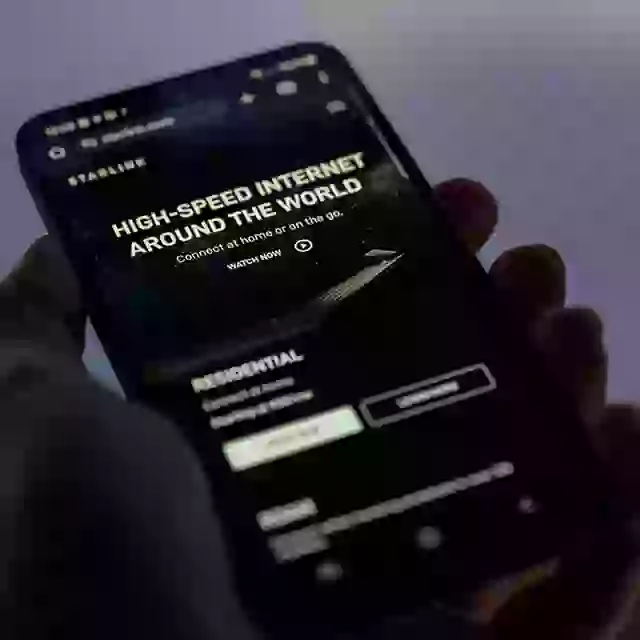In a bold leap toward transforming how we stay connected, Elon Musk’s SpaceX has announced a new game-changing feature under its Starlink program: Direct-to-Cell satellite connectivity. This breakthrough technology promises to bring seamless cellular coverage to the most remote, underserved corners of the planet — places where mountains, oceans, or deserts have historically left people disconnected.
Dubbed by many as ‘epic’ in scope and potential, this innovation could end the problem of dead zones forever. But what devices will actually be compatible with this cutting-edge service? In this article, we’ll explore the technology, its implications, and the growing list of devices expected to work with it.
What Is Starlink’s Direct-to-Cell Technology?
Before diving into the devices, it’s important to understand what this technology is and why it matters.
Starlink Direct-to-Cell is a service that allows ordinary smartphones and devices to connect directly to satellites in low Earth orbit (LEO) without the need for specialized hardware or antennas. Unlike traditional satellite phones, users don’t need bulky handsets or external accessories. The service essentially turns regular mobile devices into satellite-capable phones when they’re out of reach of ground-based cell towers.
This means you could be hiking in the Himalayas, sailing across the Pacific, or driving through the Australian outback and still send texts, make calls, and access basic internet services.
Compatible Devices: What’s on the List?
One of the most exciting parts about this innovation is that it’s designed to work with existing smartphones. Yes — no new hardware required. However, the compatibility will also depend on carrier partnerships and the phone’s modem capabilities.
1. iPhone 14 and iPhone 15 Series
Apple has already made strides in emergency satellite connectivity with its SOS feature, but Elon Musk’s Starlink service is set to extend this capability to full text and voice support. Given the advanced Qualcomm modems inside these models, they’re expected to be among the first mainstream devices to support the Starlink Direct-to-Cell network once carriers activate it.
2. Samsung Galaxy S23, S24, and Future Models
Samsung’s flagship Galaxy S23 and newly launched S24 series are equipped with Qualcomm Snapdragon modems known to be compatible with satellite connectivity protocols. Samsung has already hinted at adding native satellite connectivity features in upcoming software updates, making these devices natural candidates.
3. Google Pixel 8 and Pixel 8 Pro
With Google’s focus on emergency features and its adoption of next-gen connectivity standards, the Pixel 8 series — powered by Google’s Tensor G3 chip and compatible modems — will likely be on the frontlines of adopting this Starlink feature, especially with Android’s open support for satellite APIs.
4. Motorola Defy Satellite Link
This rugged device is one of the first third-party accessories specifically built for satellite messaging. While it connects to any smartphone via Bluetooth, its integration with the Starlink Direct-to-Cell network could enhance its abilities, giving it broader reach beyond current limitations.
5. Upcoming Tesla Phones (Rumored)
Rumors have long circulated about a possible Tesla phone designed to integrate deeply with Starlink. If true, this device would undoubtedly be purpose-built for seamless direct-to-satellite connectivity, potentially offering enhanced capabilities such as video streaming or Starlink-managed cloud services.
How Will Compatibility Work?
Starlink’s Direct-to-Cell feature works by leveraging existing LTE protocols, essentially making the satellite act as a cell tower in space. This means that as long as a device supports standard LTE bands and protocols, it could, in theory, connect to Starlink’s satellites.
However, real-world compatibility will also depend on:
-
Carrier support: Carriers must partner with Starlink to enable access on their SIM cards and integrate the satellite infrastructure with their services.
-
Firmware updates: Some devices may require modem firmware upgrades to efficiently communicate with satellites.
-
Government regulations: In some countries, satellite cellular services might face regulatory hurdles.
So far, Starlink has announced partnerships with major carriers like T-Mobile (U.S.), Optus (Australia), and Rogers (Canada), with more expected to follow.
What Features Will Be Available?
Initially, the Direct-to-Cell feature will support:
-
SMS messaging
-
Basic phone calls
-
Low-bandwidth web browsing
-
Emergency services
Over time, Starlink plans to improve bandwidth capacity, ultimately aiming for 4G-level speeds and possibly even lightweight video calling. This phased rollout ensures stability and compatibility before scaling up to high-bandwidth services.
Why This Is a Big Deal
Today, over 2.7 billion people lack reliable mobile coverage. Starlink’s satellite-based approach can blanket the entire planet with coverage — no cell towers, no infrastructure delays, no dead zones. This has immense potential for:
-
Rural and remote communities
-
Emergency disaster relief
-
Travelers, explorers, and sailors
-
Military and security applications
-
Developing nations
The convenience of using existing smartphones without additional hardware lowers adoption barriers and ensures widespread, rapid access once rolled out.
Final Thoughts
Elon Musk’s Starlink Direct-to-Cell feature represents a monumental shift in global connectivity. By allowing regular smartphones — like the latest iPhones, Samsung Galaxy devices, and Pixels — to connect directly to satellites, it levels the playing field and makes staying connected no matter where you are a real possibility.
While still in its early stages, the future looks undeniably exciting. As more carriers join forces and devices get firmware updates, your phone might soon be your lifeline in even the most isolated corners of the world.










